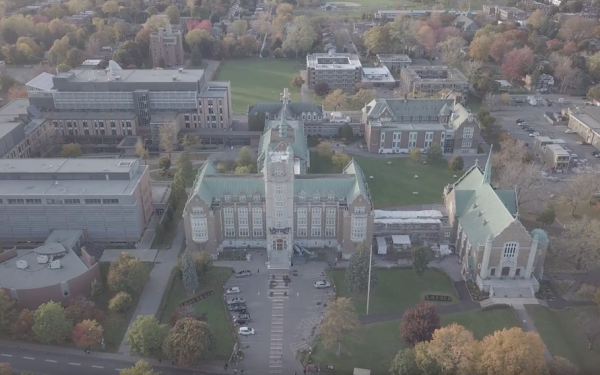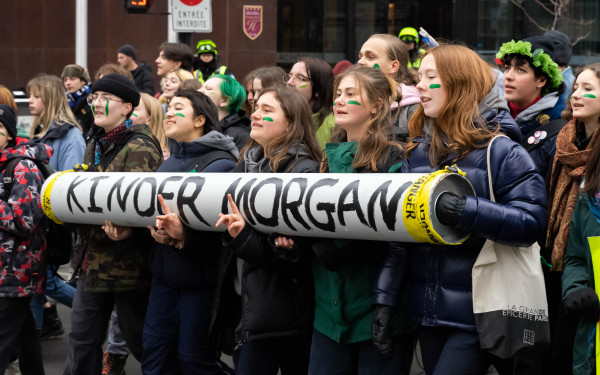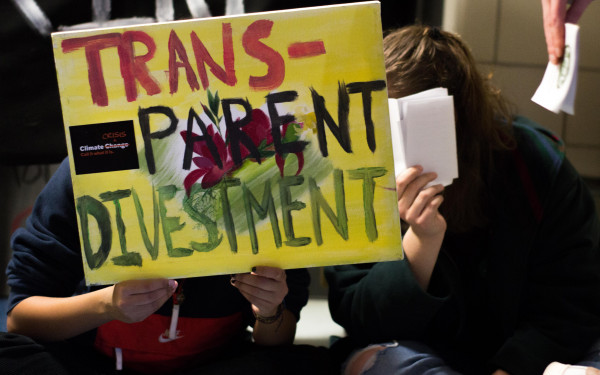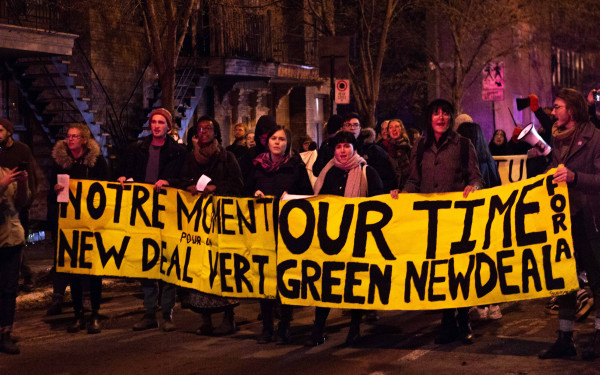Welcome to the Sprawl
Analyzing the Spread of the Suburbs in Montreal
For Lissa Marcotte, there’s truth in the marketing slogan “La vie est belle à Mirabel.” In this suburban municipality on the northern periphery of the Montreal metropolitan region, where suburban comfort meets the tranquility of farm country, life is good.
“We like the neighbourhood very much,” said the social worker and mother of three boys aged 7, 5 and 2. “Families know each other. Between neighbours, we’ll help each other. […] There are also a lot of children. There’s lots of parks with playgrounds and skating rinks, they’re well-maintained.”
Mirabel has grown considerably in recent years. The last Canadian census found that its population increased by no less than 21.2 per cent between 2006 and 2011.
“There are two schools that are at full capacity and there’s talk for next year of building a third school,” said Marcotte, who has lived in the suburban municipality for 12 years and has seen the influx of families profoundly transform the area. “It’s truly an economic boom.”
But not everything in the suburbs is as rosy as it seems. The suburbs are not nearly as environmentally friendly as their lush, green lawns may lead the unsuspecting city-dweller to believe.
Understanding the Phenomenon
Canada is most accurately described as a suburban nation, according to a study published in the Journal of Architectural and Planning Research last fall.
In “Suburban Nation? Estimating the Size of Canada’s Suburban Population,” Queen’s University urban planning professor David Gordon and policy analyst Mark Janzen found that suburban areas accounted for roughly 80 per cent of the country’s metropolitan population and around 66 per cent of the national population in 2006.
Montreal is no exception. Data provided by Gordon to The Link shows that 76 per cent of the metropolitan region’s residents lived in car-dependent suburban areas within Montreal or neighbouring suburban municipalities in 2011.
It wasn’t always that way.
“The urban sprawl in both metropolitan areas—in Quebec City and Montreal—increased sharply from 1951 to now, and the sharpest increase happened in the past 30 years, between 1986 and now,” said Naghmeh Nazarnia, who recently completed her master’s thesis on urban sprawl at Concordia.
“The results [of my research] show that the degree of sprawl in the Montreal metropolitan area increased 11-fold.”
_900_357_90.jpg)
The Environmental Impact
For McGill University urban planning professor Raphaël Fischler, it’s important to acknowledge that urban sprawl has enabled many people to achieve the dream of a home of their own.
“What people generally negatively call urban sprawl has in fact been an incredible contribution to the middle class in terms of giving the middle class access to single-family housing,” Fischler said. “The middle class cannot afford a single-family house or a semi-detached house, something with a yard and of a decent size, inside the city.”
Still, all of this residential development on the edges of the metropolitan region has its disadvantages.
“The environmental reputation of suburbs is a bad one, and it’s deservedly so,” Fischler said. “They are clearly not a gift to the Earth in terms of [their] carbon footprint.”
In some parts of the metropolitan region, suburban development has undercut rich ecosystems such as wetlands, destroying natural habitats—a definite “no-no,” according to Fischler.
Fischler adds that the energy consumption of suburbanites is also higher than that of city-dwellers.
“If you have a single-family home, it takes more energy to heat than a condominium, because it has four walls and a roof exposed to the elements,” he said.
That may one day change, however.
“If solar energy, wind energy and other forms of alternative energy become [more viable], it may be that every home in the suburbs can become energy-independent and everyone will drive cars that are using renewable energy, and this question [of sustainability] will become moot,” he continued.
“However, at this point [in time], when we still rely on a lot of fossil fuels, it is clear that cities have a lower carbon footprint than suburbs and that suburbs involve more energy expenditures per [housing] unit.”
Curbing the Sprawl
Though he doesn’t dismiss land use policies entirely—he is an urban planner by profession, after all—Fischler argues that the Montreal metropolitan region’s carbon footprint can be reduced more easily through technological innovation than through better metropolitan planning.
For instance, he said increasing the fuel efficiency of cars by 50 per cent would significantly reduce greenhouse gas emissions. Achieving a similar reduction in the region’s carbon footprint through planning tools would require 50 per cent of the individuals living in single-family homes to move into more energy-efficient condos or apartments—something that would be considerably more difficult to bring about.
But even if technological progress might be a shortcut to environmental sustainability, Fischler said there are other reasons to curb urban sprawl, including the fact that cities promote greater inter-generational and social equity.
“In the suburbs, I think the question of car dependency has a tremendous impact, and that’s not a technological question,” he said. “That’s a question of the fact that under 18 and over a certain age if you become less physically fit, you cannot drive.
“It’s possible that, in the future, automated vehicles à la Google will solve that problem and that any youngster of 12 and any elderly person of 92 can hop in a self-driving electric vehicle, but for the moment, the suburb is not a very equitable place in many cases for poor people, for the elderly and for the young.”
Reducing the amount of urban sprawl may also help to protect the forests and farms left in Greater Montreal.
Progress is being made, according to Fischler, who says suburban municipalities are increasingly taking public transit into account in their development plans, seeking to build denser neighbourhoods around transit hubs.
As for the environment, Claude Marois, a geography professor at the Université de Montréal, says the laws already in place to protect agricultural lands in the metropolitan region are working, and that he’s also noticed a shift in the mentality of suburban municipalities on the importance of conserving agricultural areas and forests.
“Despite all the urban pressures, agriculture is continuing relatively well,” Marois said. “Since the 1990s, more and more municipalities are realizing that the protection of the environment becomes a factor in enhancing their attractiveness to residents, that quality of life and improvement of the environment go together.”

_900_646_90.jpg)
_600_832_s.png)




